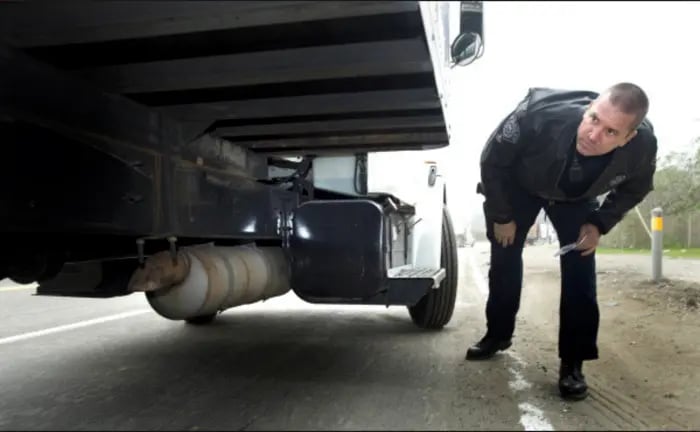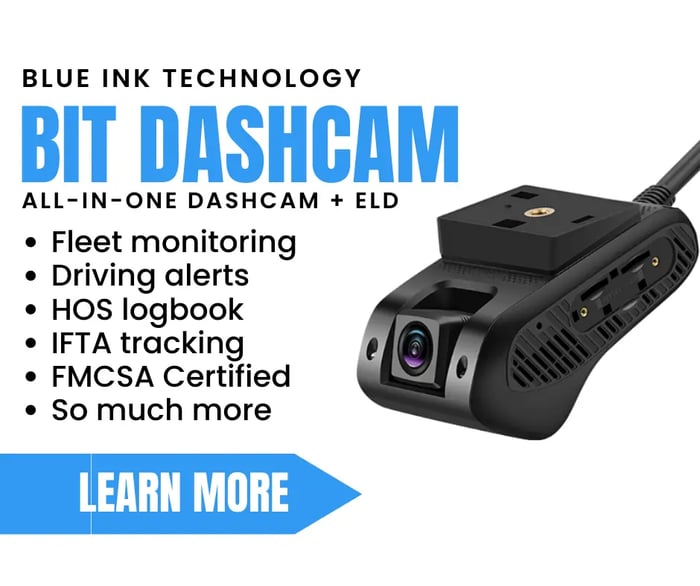 The Federal Motor Carrier Safety Administration (FMCSA) is responsible for regulating the trucking industry to ensure the safety of commercial motor vehicles (CMVs) on the road. One of the key aspects of maintaining safety is enforcing regular inspections of CMVs to guarantee that they are in good working condition. We'll dive into the Minimum Periodic Inspection Standards (MPIS) set by the FMCSA, outline the main components of these inspections, and highlight the importance of following these standards for the trucking industry.
The Federal Motor Carrier Safety Administration (FMCSA) is responsible for regulating the trucking industry to ensure the safety of commercial motor vehicles (CMVs) on the road. One of the key aspects of maintaining safety is enforcing regular inspections of CMVs to guarantee that they are in good working condition. We'll dive into the Minimum Periodic Inspection Standards (MPIS) set by the FMCSA, outline the main components of these inspections, and highlight the importance of following these standards for the trucking industry.
The FMCSA's Minimum Periodic Inspection Standards serve as a baseline for the inspection and maintenance of commercial vehicles operating in interstate commerce. These standards require CMVs to undergo a thorough inspection at least once every 12 months. The goal of these inspections is to identify and address any safety-related defects or violations that may pose a risk to the vehicle or its drivers
Key Components of the MPIS
The FMCSA requires that certain components of CMVs be inspected during the annual inspection to ensure that they are in proper working order. These components include:
-
Brake system: Inspectors will check the service brakes, parking brakes, and brake system components for proper functioning and adequate performance.
-
Steering mechanism: The steering system must be inspected for excessive wear, looseness, and missing or damaged parts.
-
Lighting devices and reflectors: All required lights, including headlights, tail lights, turn signals, and reflectors, must be in proper working order and free of damage.
-
Tires, wheels, and rims: Inspectors will check for proper inflation, tread depth, and general condition of tires, as well as inspect wheels and rims for cracks, breaks, and other damage.
-
Windshield and wipers: The windshield must be free of cracks, chips, or other obstructions, and windshield wipers must function correctly.
-
Fuel system: Inspectors will check for leaks and ensure that all fuel system components are securely attached.
-
Suspension system: The vehicle's suspension system must be free of broken or missing parts, excessive wear, and misalignment.
-
Exhaust system: The exhaust system must be leak-free, securely attached, and free of damage that could cause fumes to enter the vehicle's cab.
-
Frame, body, and chassis: Inspectors will check for cracks, excessive corrosion, and other structural issues that may compromise the integrity of the vehicle.
-
Coupling devices: Coupling devices must be in good working order, free of excessive wear or damage, and properly secured.
The Importance of the MPIS
Regular inspections in compliance with the FMCSA's Minimum Periodic Inspection Standards are crucial for maintaining the safety and reliability of commercial vehicles on the road. These inspections help identify potential issues before they become critical, reducing the risk of accidents, breakdowns, and costly repairs. Making sure that drivers are performing daily pre-trip inspections or DVIRs is a good habit to help keep on top of maintenance related issues.
Also, carriers who fail to comply with the MPIS put themselves at risk fines, penalties, and negative impacts on their Compliance, Safety, Accountability (CSA) scores. These issues can lead to higher insurance cost, possible DOT audits of closing down the business in continually ongoing cases.
Inspectors must follow the guidelines provided by the FMCSA to make sure that each of these components is functioning correctly and safely. If any component fails to meet the minimum standards, the vehicle will be placed out-of-service and the issues must be repaired or replaced before the vehicle can be operated on public roads.
How do the MPIS compare to the Vehicle Maintenance BASIC?
The minimum periodic inspection standards and the Vehicle Maintenance BASIC (Behavior Analysis and Safety Improvement Category) set by the FMCSA are both focused on ensuring the safe operation of commercial motor vehicles in the US. They are related but serve different purposes around vehicle safety.
-
The Minimum Periodic Inspection Standards require commercial motor vehicles to be regularly inspected to make sure that they are in safe operating condition. The minimum periodic inspection standards cover various aspects of the vehicle, such as the brake system, steering, lighting, suspension, and other components.
-
The Vehicle Maintenance BASIC is one of the seven categories within the Compliance, Safety, Accountability (CSA) program set by the FMCSA. This program is designed to assess motor carriers' safety performance and compliance with the FMCSRs. The Vehicle Maintenance BASIC focuses on the proper maintenance and mechanical condition of CMVs, including issues related to brakes, tires, lights, and other vehicle parts.
While these serve similar purposes the Minimum Periodic Inspection Standards is focused around the motor carrier and how they should periodically inspect their fleet and the Vehicle Maintenance BASIC is geared towards DOT and enforcement of vehicle maintenance safety.
For a free download of all items to check for the minimum periodic inspection standards please DOWNLOAD HERE

